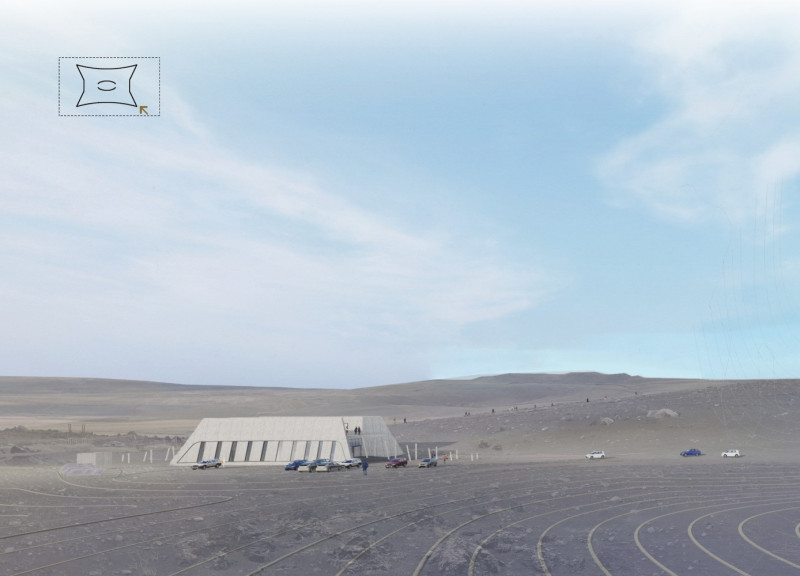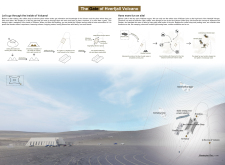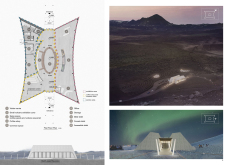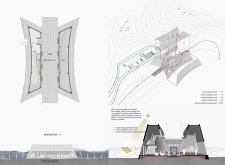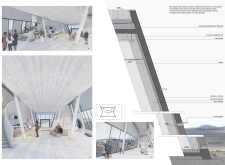5 key facts about this project
The design of this project embodies the idea of a gateway, symbolizing the transition from the ordinary to the extraordinary geological experience awaiting visitors. It functions as both an entry point to the Hverfjall Volcano and a space for communal interaction, enhancing educational outreach within the region.
Architectural Integrity and Material Selection
The architectural integrity of the project is evident in its thoughtful material selection. Volcanic concrete, sourced locally, is used extensively, offering not only durability but also a direct connection to the geological context. The structural steel framework enhances openness within the interior, allowing for continuous pathways and spaces that facilitate movement and congregation. Timber elements are integrated for warmth, contrasting with the heavier materials and creating a tactile experience for visitors. Low-E insulating glazing is employed to improve energy efficiency and comfort, addressing the variable climate of Iceland.
Innovative Functional Spaces
The layout includes distinct zones that cater to a variety of functions. The visitor center contains exhibition spaces dedicated to geological education along with interactive displays that engage users of all ages. Adjacent to this, a coffee shop offers a communal space for relaxation and social interaction, positioned to provide views of the surrounding landscape. Service areas are discreetly located to maintain the aesthetic integrity and functionality of the building. The overall organization of these spaces is designed to create a flow that guides visitors naturally through the experience.
Integration with the Landscape
The project's placement within the geographic context is a defining characteristic. It follows the natural contours of the land, minimizing disruption to the existing ecosystem. Landscaping complements the architectural design, creating outdoor areas that encourage exploration and interaction with the unique volcanic terrain. The roof structure is particularly noteworthy, designed to manage thermal performance while offering vantage points for observing the stunning vistas of the region.
The Gate of Hverfjall Volcano stands out among similar architectural projects through its contextual approach and innovative use of local materials. Its focus on sustainability and educational outreach positions it as a model for future projects in ecologically sensitive areas. To gain a deeper understanding of this project, the reader is encouraged to explore architectural plans, architectural sections, and architectural designs that detail the unique features and innovative ideas behind the project.


